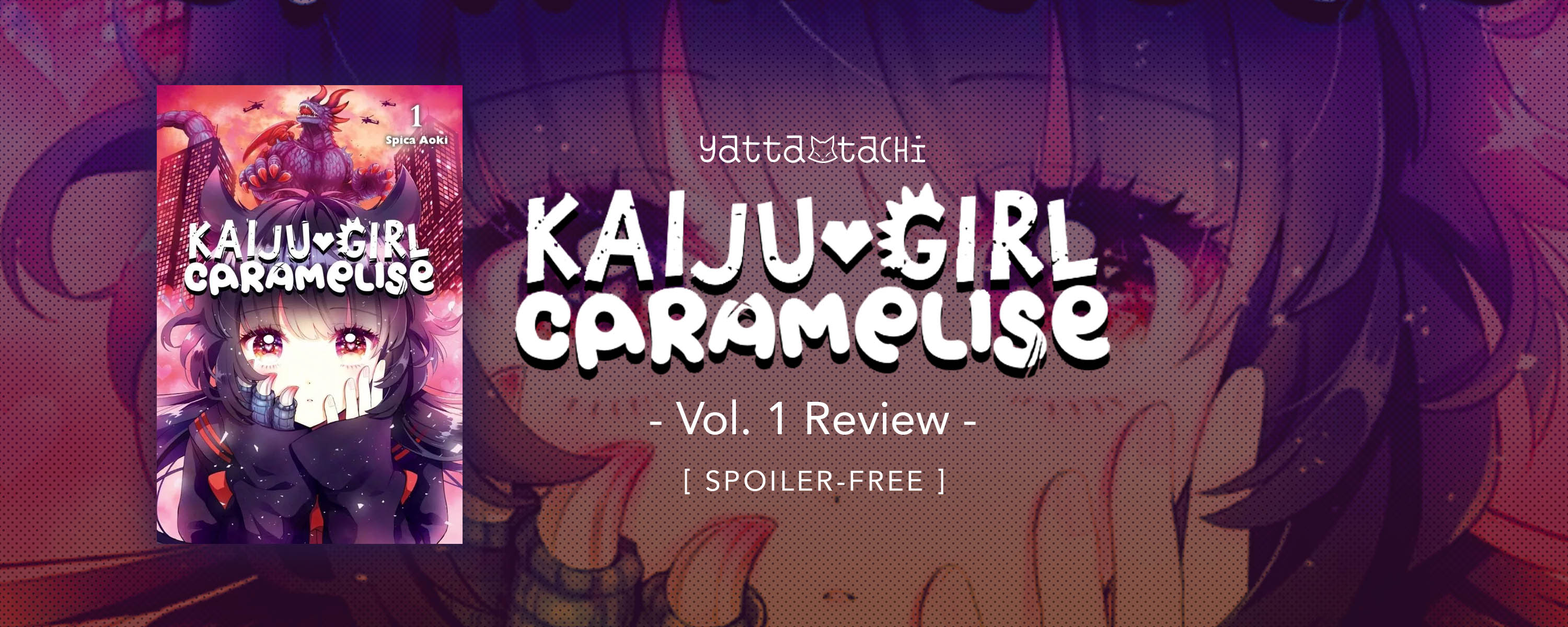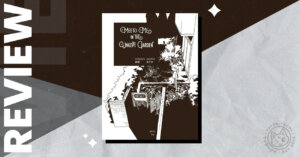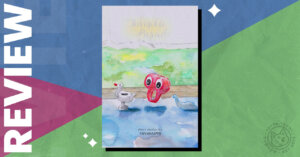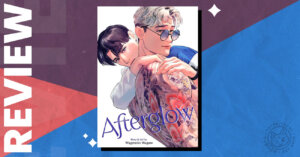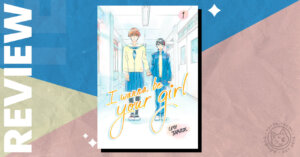High schooler Kuroe Akaishi has a rare and seemingly incurable disease. Whenever she gets overwhelmed or anxious, parts of her body rapidly transform, crusting over with reptilian, keratinous skin growths. A public attack of this disease as a kid scared off a crush and left her traumatized, so now she keeps to herself. She especially avoids the most popular boy in her school, Arata Minami, and the mean girls that hang around with him. But Minami takes an interest in her, and soon she’s getting overwhelmed every day.
Unfortunately, the more attracted to Minami she becomes, the more she experiences those bizarre skin growths, until one day she doesn’t just sprout claws and scales, but completely transforms into a towering Godzilla-like monster. She eventually changes back, but will she be able to maintain her developing relationship with Minami while keeping her identity as the now-famous monster a secret?
At First Glance
Kaiju Girl Caramelise runs in a seinen magazine, but everything about it looks and feels like a shojo manga, albeit a pretty weird one. Author and artist Spica Aoki is mostly known for shojo series, and it shows. The art has all the stereotypical hallmarks of shojo manga, to a degree that borders on parody at times. All the boys are fashionable and beautiful. All the girls are weapons-grade cute, even the ones that are supposed to be painfully plain (even the mom). There are heart pupils, sparkles, bubbles and flowers on nearly every page, and frequent super-deformed joke panels. The core pure-hearted romance between easily flustered wallflower Kuroe and handsome, friendly jock Minami also has more in common with a series for preteen girls than it does with the fetish-y debauchery of many seinen rom-coms.
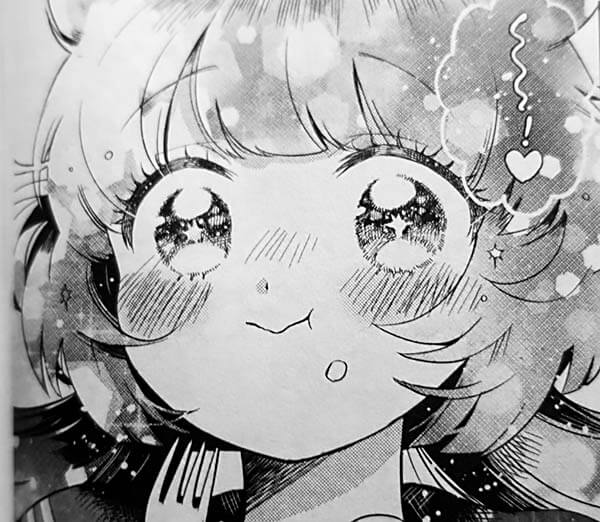
None of this is a negative, of course. It may be silly at times, but it suits the ultra-melodramatic mood Aoki is aiming for perfectly. Coupled with the scenes of a giant monster destroying buildings and swatting missiles out of the sky, it proves how wide her range as an artist really is.
The translation by Taylor Engel is easy to read and feels true to the way teens talk. At the same time, it avoids using any niche slang or meme references that might leave it feeling dated in a matter of months. I couldn’t have asked for better localization in that regard. I generally prefer when Japanese sound effects are replaced entirely with English ones, rather than having English sounds written very small next to them. I realize this is a lot more work and not realistic in some cases, and small English sounds next to the original Japanese sounds seem to be the Yen Press house style, so I don’t blame letterer Lys Blakeslee for this.
The lettering and typesetting are great otherwise. It accomplishes the incredible feat of using a bajillion different fonts without that being distracting – if anything, it helps sell the humor and emotions more. Lettering is the part of English manga that usually stands out the least, so when it stands out by being good, I feel like I have to highlight it.
Under the Hood
It should go without saying though that the draw of the series isn’t what it has in common with other shojo manga – it’s the one BIG difference, and how jamming that difference into an otherwise conventional story works on multiple levels. The tonal whiplash of going from hand-holding and sidelong glances to kaiju chaos subverts basically every romance manga trope there is in one fell swoop. Then monster movie tropes get subverted too when the sidelong glances continue even as kaiju Kuroe stomps down a busy thoroughfare. Aoki has an aggressive disregard for the expected, and it makes for one of the strangest, funniest manga I’ve read in a while.
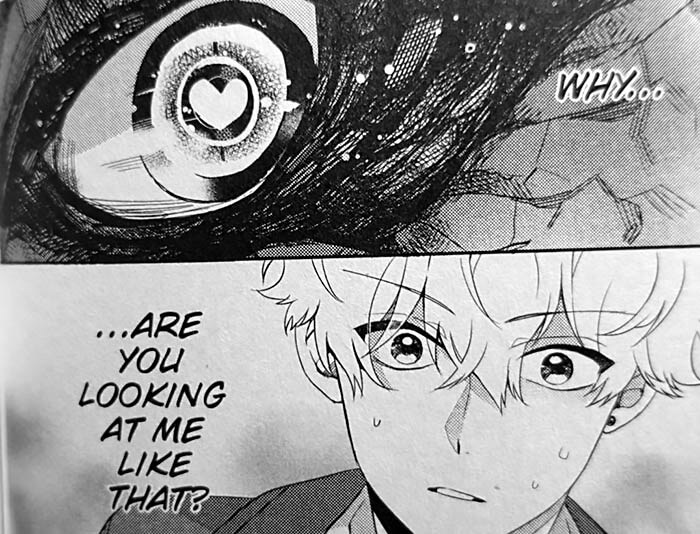
Kuroe’s transformation also functions as a totally unsubtle but still effective metaphor for the whole teen experience. My high school life, like many people’s, was a blur of anger, anxiety, terrible first impressions, sexual confusion, plummeting confidence, and nervous self-sabotage, and somehow turning into a lumbering monster as tall as a skyscraper is the perfect representation of every single one of those. And it was strangely comforting for me even now, as someone who’s still a socially awkward oddball.
Sprout a stress zit overnight even though I’m closing in on 30 years old? Better than sprouting a tail. Get too anxious and have to escape a social situation? Be glad I’m not crushing houses with every fleeing step. Came on too strong and got shot down by a woman at a party? At least I don’t turn into a literally horny monster when I say something stupid in front of someone I’m attracted to.
The Verdict
If you’ve lived through puberty or are currently living through it, you’ll probably find something to relate to in this story. If you’ve ever been uncomfortable with your body, your emotions, or your sexuality, or just felt like you were losing control of your life, you owe it to yourself to at least check out Kaiju Girl Caramelise. Spica Aoki remembers what it was like to be a loser in heat, and she sympathizes in the most hilarious and endearing way she can. I can’t recommend Kaiju Girl Caramelise enough.
Kaiju Girl Caramelise is published by Yen Press and is available from Barnes and Noble, Book-A-Million, and Right Stuf.
For more information about Kaiju Girl Caramelise, visit Anime-Planet.

Featured Sponsor - JAST
The sweetest romance and the darkest corruption, the biggest titles and the indie darlings; for visual novels and eroge, there's nowhere better.
Big thank you to our supporters
From their continous support, we are able to pay our team for their time and hard work on the site.
We have a Thank-You page dedicated to those who help us continue the work that we’ve been doing.
See our thank you page